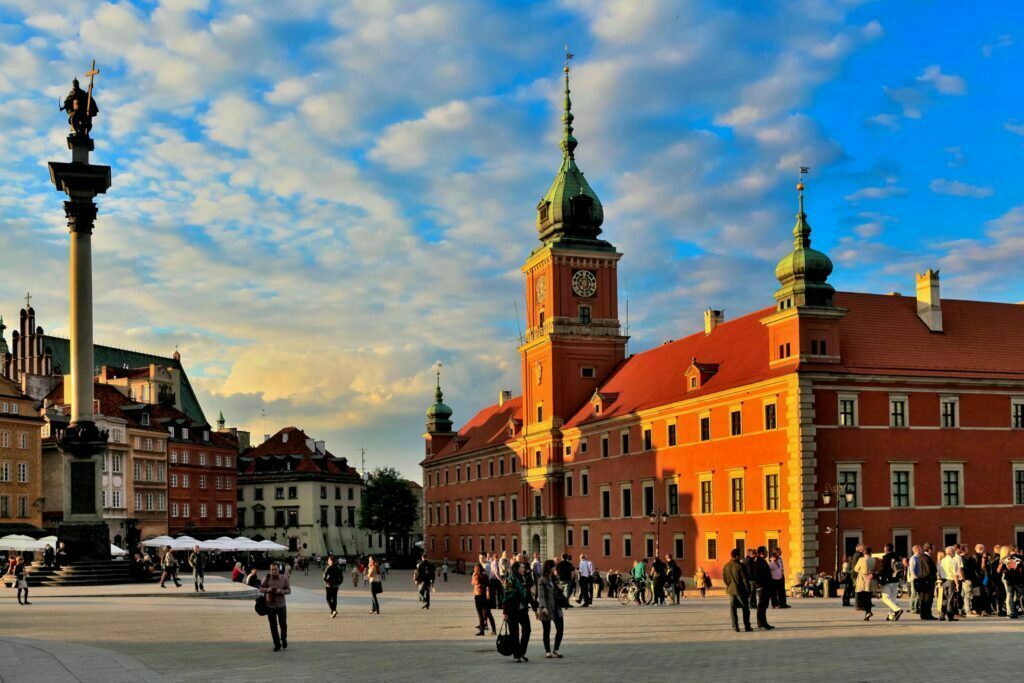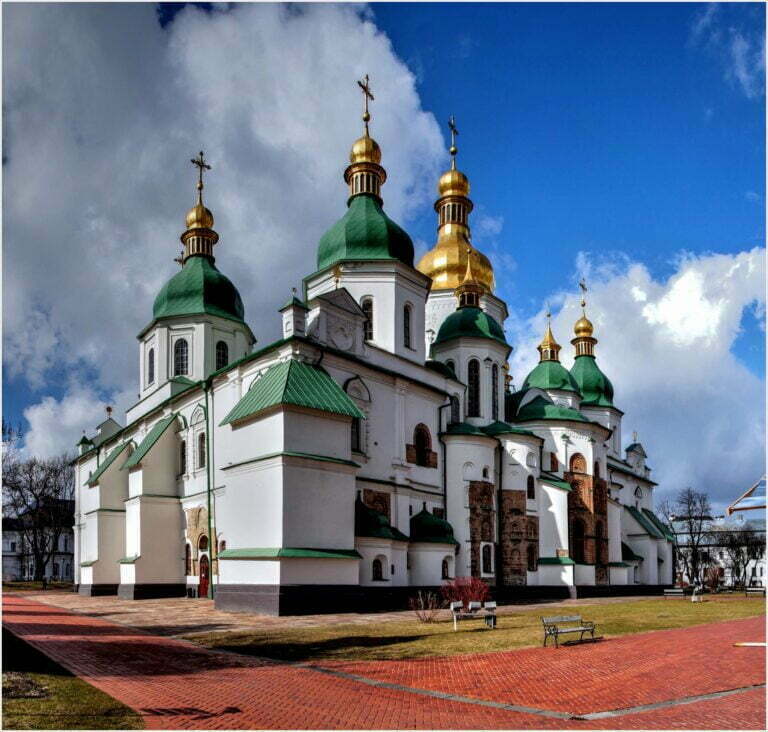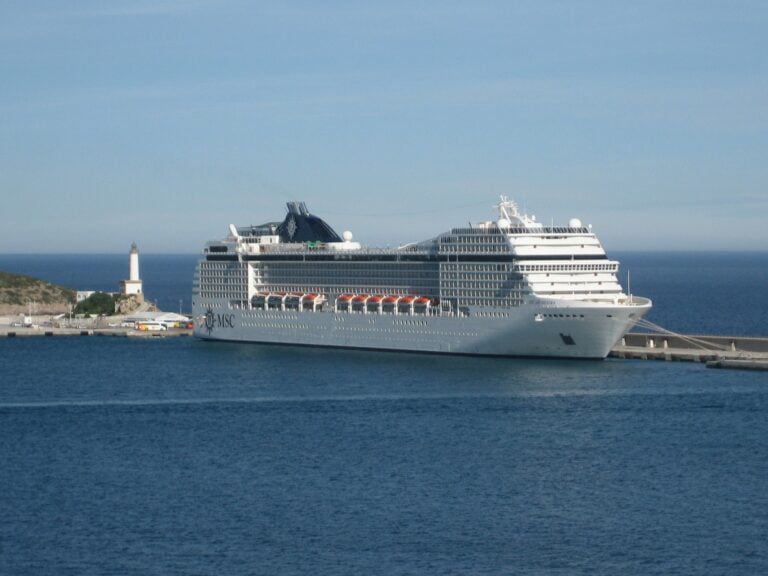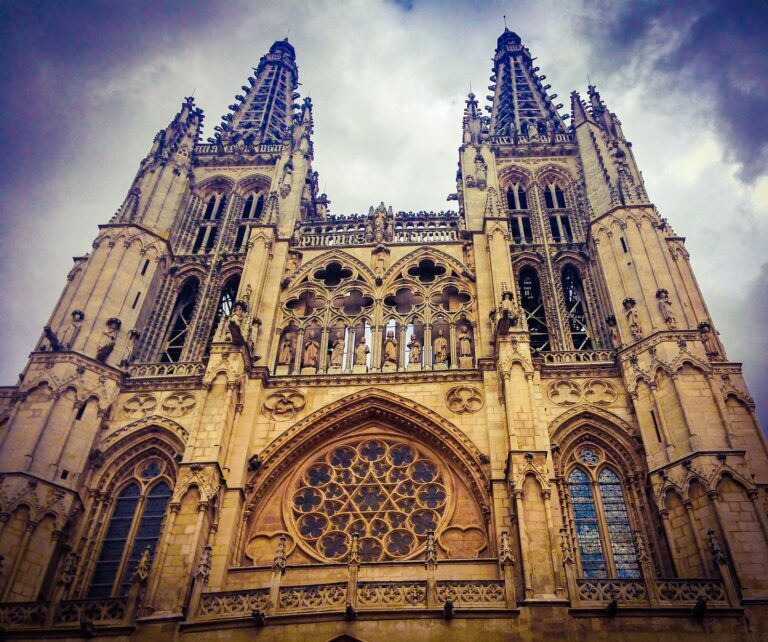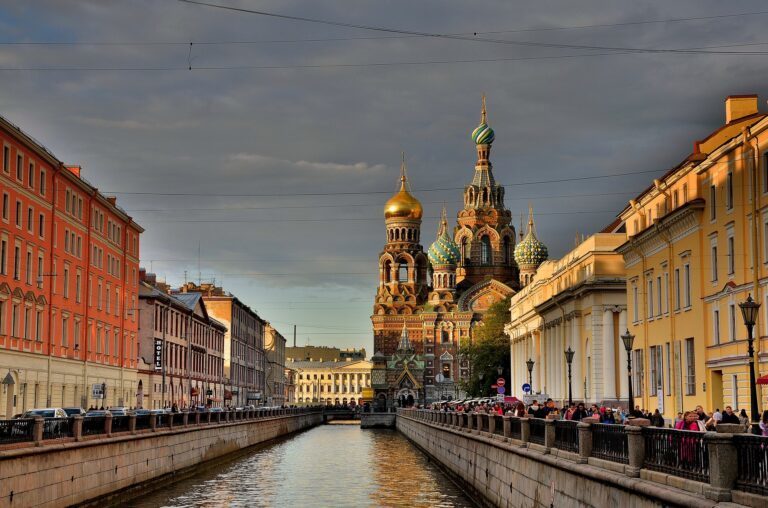17 UNESCO world heritage sites Poland. UNESCO sites in Poland, varied landscapes include ancient woodlands, medieval castles, and incredible salt mines.
The horrific Auschwitz Birkenau Camp is also on the list. UNESCO (United Nations Educational, Scientific, and Cultural Organization) designates World Heritage Sites as having cultural, historical, scientific, or other value.
Historical sites in Poland
A World Heritage Site must be a one-of-a-kind landmark that is both geographically and historically identifiable, as well as having outstanding cultural or physical significance, in order to be chosen. Poland’s history spans 1,000 years and is rich in cultural assets and traditions.
UNESCO world heritage sites Poland
Every year, millions of tourists visit the country. Many tourists consider Poland’s world heritage sites to be among the most important places to visit. If you only have a limited amount of time in the country, I strongly suggest that you try to see any of the world heritage sites.
Krakow, in particular, is a World Heritage Site in and of itself. It is ideally located near two additional World Heritage Sites in Poland: Auschwitz-Birkenau and the Wieliczka Salt Mine.
Auschwitz Birkenau German Nazi Concentration and Extermination Camp (1979)
During World War II, this camp was part of a network of Nazi concentration and death camps. These camps, which were run by the Third Reich, are the world’s largest concentration camps. The base camp, extermination camp, labour camp, and 45 satellite camps are among the various elements of the complex.
The conditions are depicted by the fortified walls, barbed wire, platforms, barracks, gallows, gas chambers, and cremation ovens. In the old concentration and extermination camp of Auschwitz-Birkenau, the Nazi genocide took place.
According to historical research, it was the largest in the Third Reich. In this camp, 1.5 million individuals were brutally malnourished, tortured, and murdered, including a large number of Jews. Auschwitz-Birkenau is an emblem of humanity’s 20th-century cruelty to its fellow humans.
Castle of the Teutonic Order in Malbork (1997)
The Teutonic Order’s castle in Malbork is the world’s largest in terms of land area. A German Roman Catholic religious order of crusaders commissioned the construction of this stronghold. It was first known as “Mary’s Castle.”
The castle is well-known for emulating the architectural style of a mediaeval fortification. It was the largest Gothic fortress built with bricks when it was completed in the early 15th century. After 1309, the Teutonic Order’s walled monastery, which dates from the 13th century, was significantly enlarged and ornamented.
When the Grand Master’s seat was relocated from Venice to this location. It gradually fell into disrepair after being a very beautiful example of a medieval brick fortress. However, throughout the 19th and early 20th centuries, it was painstakingly repaired.
Many of the now-standard conservation techniques were developed here. It was restored after suffering serious damage during World War II. Using the thorough documentation that previous conservators had compiled.
Centennial Hall in Wrocław (2006)
The People’s Hall was previously the name of this ancient structure in Wroclaw. It was added to Poland’s list of UNESCO World Heritage Sites because of its cultural significance. From 1911 to 1913, architect Max Berg designed the hall.
In the history of reinforced concrete buildings, the Centennial Hall is a milestone. It was built as a multi-purpose recreational building by architect Max Berg between 1911 and 1913. It’s on the grounds of the Exhibition Grounds.
It has the shape of a symmetrical quatrefoil, with a large circular central chamber that can seat 6,000 people. The steel and glass lantern sits atop the 23-meter-high dome. The Centennial Hall is a groundbreaking piece of modern design and engineering.
This demonstrates a significant exchange of influences in the early twentieth century. Hence, it has been an important reference in the development of reinforced concrete structures in subsequent years.
Churches of Peace in Jawor and Świdnica (2001)
It functioned as a hallmark of reinforced concrete buildings, and UNESCO designated it as one of Poland’s heritage sites. The Peace Churches in Jawor and Swidnica are Europe’s largest timber-framed religious structures.
These were constructed in the mid-seventeenth century in the old Silesia. Following the Peace of Westphalia, there was religious turmoil. Physical and political constraints limit my options.
The Churches of Peace are a rare representation of Lutheran ideology and stand witness to the struggle for religious liberty. It’s a phrase that’s commonly linked with the Catholic Church.
Historic Centre of Kraków (1978)
The historic core quarter of Krakow is included in this list of UNESCO World Heritage Sites in Poland. It is one of Poland’s most popular districts and served as the country’s political capital until 1596, when Warsaw took over. This mediaeval village was one of the first places in Poland to be added to the UNESCO World Heritage List.
The Historic Center of Krakow, Poland’s former capital, is located at the foot of the Royal Wawel Castle. The largest market square in Europe, as well as several antique homes, palaces, and churches with spectacular interiors, can be found in this 13th-century merchants’ town. More traces of the town’s enthralling past.
The ruins of the 14th-century defences, as well as the mediaeval site of Kazimierz, bear witness to this. It also has old synagogues in the southern part of town, as well as Jagellonian University and the Gothic cathedral where Poland’s rulers are buried.
Historic Centre of Warsaw (1980)
Warsaw is another of Poland’s most well-known cities. It is also one of Warsaw’s UNESCO World Heritage Sites, at least the historic center. The Warsaw Old Town was founded in the 13th century. Until 1339, the town was surrounded by an earthwork rampart before being strengthened with brick walls.
The Royal Castle is the primary attraction in Warsaw’s Old Town. The Castle of the Dukes of Mazovia was its previous name. During the Warsaw Uprising in August 1944, Nazi troops destroyed more than 85 percent of Warsaw’s historic center.
Following the war, people embarked on a five-year rehabilitation campaign that resulted in the meticulous restoration of the Old Town that we see today. With its churches, palaces, and market, it is one of the most beautiful cities in the world. This is an excellent example of a near-total recreation of a historical period spanning the 13th to the 20th centuries.
Kalwaria Zebrzydowska: the Mannerist Architectural and Park Landscape Complex and Pilgrimage Park (1999)
The Kalwaria Zebrzydowska is a stunning cultural landscape with significant spiritual importance. The natural surroundings played a significant role in making this a significant Polish site. It is a cultural landscape that dates from the first half of the 17th century and is located south of Kraków. It is a cultural landscape that encompasses the hills of Zar and Lanckoronska.
This magnificent testament to piety and culture was the first of Poland’s large-scale calvaries. It served as a template for a number of subsequent projects. It stands out among European Calvaries because of its unique architectural elements. The deft blending of religious devotion and the environment, as well as the unbroken history of the mysteries performed here.
The shrine is dedicated to Marian worship and the veneration of the Passion. It is a superb example of a Calvary shrine from the Counter-Reformation era. The rise of piety in the form of pilgrimages has been aided by this. The themes of Christ’s Passion and the life of the Virgin Mary are intertwined in the pilgrimage park, which is a prayer garden.
Krzemionki Prehistoric Striped Flint Mining Region (2019)
Krzemionki Prehistoric Striped Flint Mining Location is a prehistoric striped flint mining region in Poland, commonly spelt Krzemionki. It is situated on both banks of the Kamienna River on the north-eastern edge of the Swietokrzyskie (Holy Cross) Mountains in central Poland.
It’s a serial property that’s made up of four components. (1) the main Krzemionki Opatowskie Mining Field, (2) two smaller mining fields, Borownia and Korycizna, all aligned on the same geological structure; and (4) the Gawroniec prehistoric miners’ permanent settlement, which received semi-finished flint axes from the mines for finishing and polishing before distribution.
The property is Neolithic to Early Bronze Age, dating from 3,900 BCE to 1,600 BCE. It is one of the Neolithic Period’s largest known complexes of its kind. It is also the most well-preserved and readable socio-technical system of prehistoric subterranean flint mining and processing, displaying the widest diversity of prehistoric flint mining processes on a single site.
Great chambers with a floor space of over 500 m2 that are not found anywhere else are among the features. A rare variety of flint was discovered on the site; striped flint banded in extraordinary zebra-like patterns of alternating colors of grey. It was mined, fashioned into axes, and spread within a 650-kilometre radius of the complex. That includes Germany, the Czech Republic, Slovakia, Ukraine, Belarus, and Lithuania today.
Medieval Town of Toruń (1997)
The Teutonic Order is responsible for the founding of Torun. In the mid-13th century, a castle was built there as a base for the invasion and evangelising of Prussia. As part of the Hanseatic League, it quickly gained a commercial function.
Many majestic public and private buildings from the 14th and 15th centuries can still be found in the Old and New Town. The mansion of Copernicus stands out among them as a testament to Torun’s importance. The majority of these architectural monuments, such as the over 200 military structures, date back to the Middle Ages.
It has also kept its mediaeval spatial layout, as well as the Gothic buildings, the Town Hall, and the burgher houses. There are a huge number of architectural structures scattered throughout the area. As such, it earns this town a place on the list of UNESCO World Heritage Sites in Poland.
Muskauer Park / Park Mużakowski (2004)
Muskauer Park is located on the banks of the Neisse River, on the border between Poland and Germany. From 1815 to 1844, it was designed by Prince Hermann von Puckler-Muskau. It blends in with the surrounding farmed landscape.
Park Muzakowski pioneered new approaches to landscape design and influenced landscape architecture development in Europe and America. It was intended to be a painting with plants, not to evoke classical landscapes or paradise. Some abandoned perfection in favour of enhancing the inherent qualities of the existing landscape with local plants.
This integrated landscape extends into Muskau, with green passages forming urban parks and framing development areas. As a result, the town became a design element in a utopian landscape. A restored castle, bridges, and an arboretum are included on the grounds.
This garden is one of Germany’s and Poland’s largest and most well-known. The most intriguing aspect is that part of the park is owned by Germany, while the other is owned by Poland. It has been designated as a UNESCO World Heritage Site in Germany. That’s because it’s able to demonstrate cross-border collaboration between two countries, in this example, Germany and Poland.
Old City of Zamość (1992)
On the commercial route connecting western and northern Europe with the Black Sea, the chancellor, Jan Zamoysky, created Zamosc in the 16th century. The architect, Bernando Morando, based his design on Italian ideal city beliefs.
Zamosc is a wonderful example of a late-16th-century Renaissance town, being a native of Padua. It has kept its original layout and defences, as well as a considerable number of structures that blend Italian and Central European architectural styles.
Because it was founded on an anthropomorphic premise, this is one of Europe’s most distinctive cities. Since its founding, the Old Town of Zamosc has been preserved in its most important aspects. There is a market square, a town hall, and American dwellings in this town, as well as some relics of the mediaeval walls.
Tarnowskie Góry Lead-Silver-Zinc Mine and its Underground Water Management System (2017)
Tarnowskie Góry is a town in southern Poland’s Upper Silesia region. It is one of central Europe’s most important mining regions. It has a massive subterranean water management system that exhibits the 300-year evolution of hydraulic engineering ingenuity.
The property encompasses the complete underground mine, including adits, shafts, galleries, and other water management system components. The majority of the property lies underground, with traces of shafts and garbage piles, as well as the ruins of a 19th-century steam water pumping station, visible on the surface.
The water management system’s components are found both below and on the surface. It bears witness to three centuries of efforts to drain the subterranean extraction zone and use waste water from mines to support communities and industries.
Tarnowskie Góry makes a considerable contribution to world lead and zinc production. According to legend, the first lump of ore was dug up at Tarnowskie Góry around 1490, causing a regional silver fever. Mining has been going on in the region for generations.
With over 20,000 pits and over 150 kilometres of walkways varying in height from 0.6 to 4.0 metres, the mine is the largest in the world. The entire labyrinth is around 35 kilometres long, including streams and drainage tunnels. In addition to the previous lead, silver, and zinc mine’s subterranean complex.
There are also 28 additional items linked to the mine on the UNESCO list. Mine shafts and tunnels are examples of this: The famed Black Trout Adit, the Staszic water supply station, 19th-century post-mining landscapes, and Park Miejski are among the attractions.
Wieliczka and Bochnia Royal Salt Mines (1978, 2008, 2013)
Since the 13th century, rock salt deposits in Wieliczka and Bochnia have been exploited. This enormous industrial enterprise is the oldest of its kind in Europe and enjoys royal rank. The Wieliczka and Bochnia salt mines, as well as Wieliczka Saltworks Castle, are part of the complex.
The Wieliczka and Bochnia Royal Salt Mines depict the historical stages of mining method development in Europe from the 13th to the 20th century. Both mines contain hundreds of kilometres of galleries containing works of art, subterranean chapels, and salt-sculpted figures.
They can be found in both mines, providing an intriguing trek into the past. Wieliczka Saltworks Castle was in charge of both the administrative and technical aspects of the mines. It dates back to the Middle Ages and has been renovated multiple times throughout its history.
The Wieliczka Salt Mine, a 700-year-old world-class landmark not far from Kraków, is a world-class monument. The Wieliczka mines have been exploiting these rock-salt deposits since the 13th century, making them Europe’s oldest of their kind.
In the 15th century, the first travellers to explore their depths died out. The Wieliczka Salt Mine is home to a fantastic subterranean city. An amazing 300 kilometres of nooks and crannies. These include meandering hallways, glittering statues, chandeliers, chapels, and even a salt-carved ballroom!
Wooden Tserkvas of the Carpathian Region in Poland and Ukraine (2013)
Tserkvas is located in south-eastern Poland, on the eastern outskirts of Central Europe, where the Carpathian Mountains rise towards the Ukrainian border. A collection of sixteen tserkvas, or churches, makes up the international property.
They were constructed of horizontal wooden logs by Orthodox and Greek Catholic communities during the 16th and 19th centuries. Those are the four ethnographic groups’ cultural expressions. The tserkvas offer witness to a particular architectural heritage founded on Orthodox ecclesiastical design, interlaced with local custom and symbolic connections to their communities’ cosmogony.
The tserkvas have a three-part structure with open quadrilateral or octagonal domes and cupolas on top. Iconostasis screens, internal polychrome decorations, and other ancient furniture are all essential to tserkvas. Wooden bell towers, churchyards, gatehouses, and graveyards are all important features of several tserkvas. These cathedrals were also erected by Poland’s noble and royal dynasties, and constructions like them can be found nowhere else on the planet.
Wooden Churches of Southern Małopolska (2003)
Southern Malopolska’s wooden churches are a collection of inscriptions. This region is home to six of the best preserved and oldest wooden Gothic churches in the world. Blizne, Binarowa, Debno Podhalanskie, Haczow, Lipnica Murowana, and Sekowa are among the towns and villages where they may be found. All of these locations are located in the ancient Malopolska area of southern and south-eastern Poland.
The Carpathian foothills in the northern section of the Western Carpathians are included. The churches are a one-of-a-kind example of Roman Catholic culture’s mediaeval timber-built church history. The horizontal log technique was used to construct them. During the Middle Ages, this was prevalent in Northern and Eastern Europe. They use a wide range of quirky structural solutions in their construction.
It did, however, make them one-of-a-kind. “They burn down year after year, so they vanish from our landscapes so swiftly.” In a letter to a friend, the dramatist and painter Stanislaw Wyspianski wrote about Poland’s wooden churches. Unfortunately, many of Poland’s wooden prayer houses—churches, synagogues, tserkvas, and mosques alike—have been lost due to their fragile nature.
Ancient and Primeval Beech Forests of the Carpathians and Other Regions of Europe (2007, 2011, 2017, 2021)
The “Ancient and Primeval Beech Forests of the Carpathians and Other Regions of Europe” is a transnational series that spans 18 nations and consists of 94 component pieces. They are an excellent example of being largely unaffected.
In pure and mixed stands of European beech throughout a range of climatic circumstances, those complex temperate forests demonstrate a wide spectrum of complete biological patterns and processes. During each of the previous 1 million years’ glacial periods, i.e., ice ages. In refuge zones in the southern sections of the European continent, the European beech, “Fagus sylvatica,” withstood the harsh weather conditions.
Scientists have documented these refuge zones using palaeoecological studies and cutting-edge genetic coding techniques. Around 11,000 years ago, after the last Ice Age, beech began to expand its range from these southern refuge zones, eventually covering broad swaths of the European continent.
Beech produced diverse sorts of plant communities while inhabiting substantially different settings throughout this expansion phase, which is currently occuring. The interaction of a variety of habitats, climatic gradients, and the gene pools of diverse species has shaped and continues to affect the diversity of beech forest ecosystems. These forests have a priceless population of old trees as well as a genetic reservoir of beech and other species. Those that are linked to, and reliant on, old-growth forest environments.
Białowieża Forest (1979, 1992, 2014)
Bialowieza Forest is a huge forest complex located on the Polish-Belarus border. The forest has remained in its native condition for generations thanks to years of preservation. In 1979, the Bialowieza National Park in Poland was added to the World Heritage List, and in 1992, it was expanded to include Belovezhskaya Pushcha in Belarus.
The property was expanded significantly in 2014, resulting in a total area of 141,885 ha with a buffer zone of 166,708 ha. Bialowieza is home to a diverse range of lowland woods typical of the Central European mixed forest terrestrial ecoregion.
Because of the size of its old growth woods, the region has significant conservation value. It encompasses large, untouched areas where natural processes are still taking place. As a result, there is a lot of dead wood, both standing and on the ground, which means a lot of fungi and saproxylic invertebrates.
The site is home to a diversified and abundant animal population, which includes 59 mammal species. Here you will find over 250 bird species, 13 amphibian species, 7 reptile species, and over 12,000 invertebrate species. The European bison is the property’s distinctive emblem. On the entire property, there are roughly 900 unique animals, i.e., European Bison, accounting for almost 25% of the total world’s population and over 30% of free-living animals.
Share to stand out from the crowd with this Blog.

